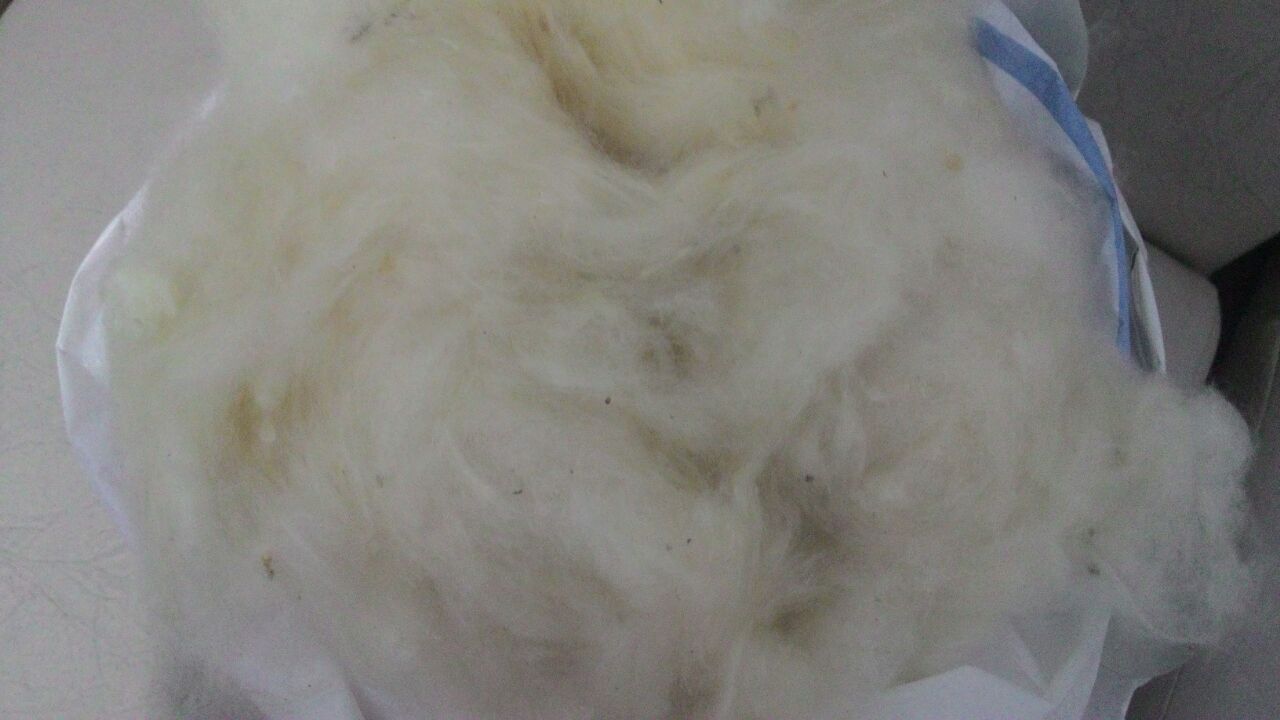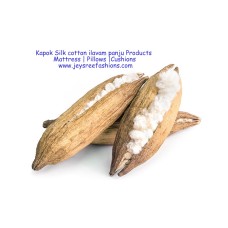 Kapok tree is a tree that lives in the native rain forest in South America to West Africa and then spread through seeds that float between the South American continent and Africa. In the tropics, this tree has been planted as in the 1940s to produce a product supply as the stuffing of car seats and also floats. Kapok is a hair fine hair that is attached to the seed that grows in the fruit after the white or pink flowers that had fallen earlier. This kapukPohon of the family Bombacaceae but moved to the family Malvaceae. This is because the cottonwoods, red silk cotton tree, which also produces cotton, still have relatives with hibiscus tree and durian. Kapok tree found in tropical rain forests and towering above all other trees at an altitude of 60-70 meters (200-230 feet).
Kapok tree is a tree that lives in the native rain forest in South America to West Africa and then spread through seeds that float between the South American continent and Africa. In the tropics, this tree has been planted as in the 1940s to produce a product supply as the stuffing of car seats and also floats. Kapok is a hair fine hair that is attached to the seed that grows in the fruit after the white or pink flowers that had fallen earlier. This kapukPohon of the family Bombacaceae but moved to the family Malvaceae. This is because the cottonwoods, red silk cotton tree, which also produces cotton, still have relatives with hibiscus tree and durian. Kapok tree found in tropical rain forests and towering above all other trees at an altitude of 60-70 meters (200-230 feet).
Kapok is a deciduous tree leaves during the dry season (May to October) in the tropics.
See the kapok tree itself is a beautiful sight, with and without interest. High above the canopy of the rain forest, the majestic cottonwood tree stands tall and during the flowering season, group of pink flowers, white or yellow at night to experience the expansion which is so beautiful.
In the forest, alone kapok tree is a tree that is easily identified because of its trunk large (up to 3 meters in diameter) and have spikes. The flowers often bloom before the leaves emerge. Less savory smell during flowering, the flowers of this tree has a pungent odor. This smell was able to attract fruit bats are believed to help pollination and also spread seeds. Seed kapok brown and round like peas. In the nooks and crannies of the kapok tree trunks, has a very inviting appeal. In addition, there are many benefits kapok we rarely know and hear, what are the benefits of the kapok? The following is an explanation:
Excess Kapok in Human Life
1. The kapok tree as asthma medications
Kapok tree is believed to have the ability as a drug, but this varies depending on where it is grown, as in the Philippines where cottonwood trees are planted, the skin is considered to treat fever.
2. The kapok tree can treat diarrhea and wound healing
kapok kapukManfaat other benefits that can also serve as a diuretic, for diarrhea and as a purgative. Sometimes given into milk for children who experience diarrhea or frequent wetting. Kapok also be used to treat a swollen finger and injuries. Kapok flower decoction is given for constipation and infusion leaves can be used for cough, hoarseness, and inflammation of the mucous membranes in the nose. Young leaves are used to treat gonorrhea.
Raw fruit that can provide pain relief, and as a substance which is very useful for soothing the mucous membranes in case of bronchitis and so on. Root decoction is given to chronic diarrhea and dysentery, while gum from the bark is astringent and styptic so good for healing wounds.
3. The kapok tree and the benefits of antioxidants and antidiabetes
In clinical studies have shown that the bark has properties as a protector and has antioxidant properties (leaves and bark) while the root extract has properties antidiabetic.
4. Timber cotton tree as a commodity
Cotton tree has many uses for humans. The wood is light and porous is excellent for carving, coffins and canoeing. Delicate fibers are too small to weave but can be used as a filler product volume.
5. Organic Kapok pillow can be a luxury
There are many benefits of cotton from many things using natural and organic ingredients to the activity of sleep, for example. Organic kapok pillow can be made into an organic, we will see the benefits from organic cotton pillows. Commonly used organic kapok pillow big plush as an excellent alternative. Naturally soft material makes a softer sound.
6. Kapok non-toxic and free of chemicals
Kapok grow naturally in the rainforest and do not require treatment in the wild then harvested and ready for sale to manufacturers pillow without using fertilizers, chemicals and pesticides. Kapok itself does not need to be treated with chemicals that are safe or healthy trees, as these trees naturally healthy and safe. Thus, cotton is a 100% natural materials and fibers organic.
7. Kapok Hypoallergenic
Kapok fiber is naturally hypoallergenic, meaning is as antimicrobial and resistant to mites. Kapok fibers are naturally resistant to moisture, so it is not suitable for life mushroom and bacteria can flourish.
8. Kapok makes sleep better
Good quality sleep is essential for general health and well-being ultimately provide. To get a better sleep, head, neck and spine should aligned straight in a comfortable pillow top healthy. Kapok pillow of soft and easily adjusted to fit the head, neck and any desired sleeping position, to give support and comfort for a good sleep quality, the ability pillows with organic cotton repel moisture can also help you sleep better.
9. Organic Kapok is the health roles
Research has shown that toxic substances and chemicals used in non-organic pillow can cause reproductive problems and neurological development. kapok pillow Organic is a natural healthy cushion that can help in preventing the disease and provide relief from headaches, neck pain, muscle pain and stress.
10. Kapok durable and washable
Kapok fiber is strong and can survive in the long term. What is needed is to be every month or more, drying cotton pillow in the sun. Cotton pillow also can be washed easily.
11. Kapok environmentally friendly
More and more companies are producing environmentally friendly products made of organic cotton bantak menaggulangi this environmental problem. Kapok is one of several forest products Continuous 100% organic and has no adverse effects on the environment to grow, when to produce, and their products.
12. The kapok fiber is a very commercial
Kapok fiber is highly appreciated for the low density and insulating properties that make it suitable to make a number of commercial applications, including filling pillows, mattresses and clothes, as well as thermal insulation. Kapok is light wood and the wood that resists useful for plywood, packaging, and the like. In Java, this tree was planted as a barrier and made a fence along the roadside. In addition to fiber, cotton seed contains 20-25% oil, very similar to cottonseed oil, which can be used for cooking, for making soaps and as a lubricant. Kapok flowers are an important source of pollen for honey bees.
13. The following kapok products can be used as fodder
Leaves Kapok is a valuable livestock feed that can be eaten by sheep, goats and cows. Kapok leaf is also used in ethno veterinary medicine in Tamil Nadu, where the ground with rice then fermented and given to cattle orally to deal with reproductive problems.
14. Seeds kapok useful
Kapok seed seed oil can be extracted and used for feeding ruminants and pigs. Kapok oil itself can also be used to feed ruminants. Kapok benefit from the above explanation, there is the environmental impact cottonwood tree. Although cotton can be used as an ornamental tree, such use is not recommended because the threads can
irritating to the eyes and nose. So it is not impossible will of cause of disease, especially in the eyes.
Please contact Jeysreepillows@gmail.com or Whatsapp +91-9944502922 for a sample . You can get a FREE kapok fiber sample internationally, if you pay for shipping
www.Kapokonline.com








